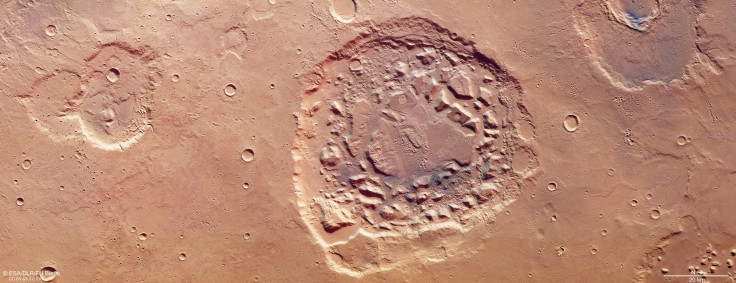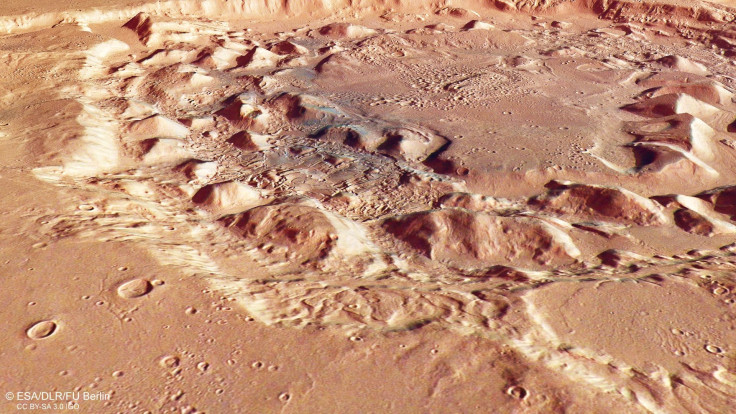Impact Crater Or Supervolcano? Strange Mars Formation Seen In Stunning ESA Images

The European Space Agency (ESA) has shared a new set of images showcasing a strange Martian depression, one that could have been a supervolcano during its early days.
Known as Ismenia Patera, the disturbed formation looks like a flat-bowl on the Red Planet and spans a whopping 75 kilometers across. It is located in the Arabia Terra region, a scientifically crucial transition zone that separates northern lowlands and the southern highlands of the planet.
ESA captured the mysterious site with its Mars Express orbiter’s high-resolution stereo camera Jan. 1. The spacecraft, which has been orbiting the planet since 2003, studies Martian atmosphere and surface while indulging in occasional imaging sessions.
The images highlight the dish-shaped depression in unprecedented detail. Viewers can see the central region carrying a spiral of hills, dips and smaller depressions, and lumps of rocks, which scientists believe were thrown out by nearby meteorite impacts.
Among other things, gullies and channels have also been observed running down from the ring of the site to its floor, something that indicates signs of flow and movement of material.
Typically, depression like these form from the impact of meteorites. Most craters on the Red Planet were created this way, but this one could be an exception, according to the agency.
This is because some think this depression was a supervolcano during its early days, one which erupted catastrophically, ejecting loads of magma in the surrounding regions, before collapsing to form the irregular-shaped depression seen today.
Though it remains unclear if supervolcanoes existed on Mars and Ismenia Patera is a remnant of one of them, scientists have found evidence of massive volcanic structures on the planet, including the famous Olympus Mons, which stands two and a half times as tall as Mount Everest, making it the largest volcano ever discovered in the Solar System.
In addition, the location of this depression further bolsters the theory. The area carries irregular-shaped surface features, uplifted rims and lacks material which should have been ejected outward from the meteorite impact. This suggests the site could have been an ancient Martian volcanic province back in the day.
However, as ESA notes, this cannot be said for sure as these features can also be linked to an impact crater that interacted with the environment and evolved with time to appear like this.
Further studies revolving around Martian interior and topography could provide more insight into the formation of Ismenia Patera and similar structures, giving a better understanding of Martian history and evolution.

© Copyright IBTimes 2024. All rights reserved.











